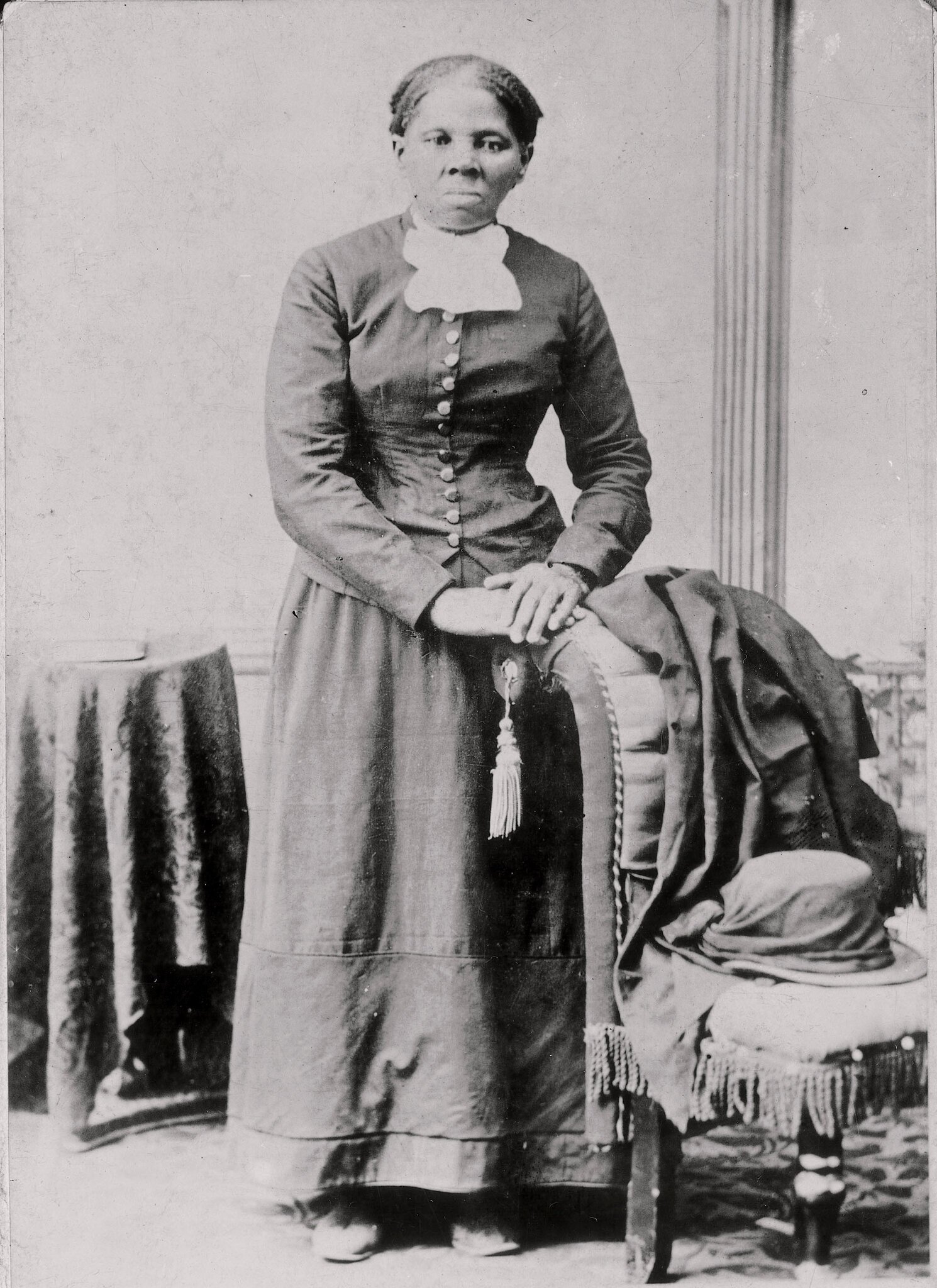Table Of Content
- lafayette street and franklin street: the center of abolitionist activism in cape may
- Explore This Park
- Tour cost and times are subject to change
- Rural North Country towns get millions to revitalize from NY Forward grants
- A proposed Underground Railroad corridor highlighting Harriet Tubman's fight for freedom
- HISTORY Vault: Black History

In 2009, Charles L. Blockson, a historian and expert on the Underground Railroad, donated to the Museum a collection of items relating to Harriet Tubman’s life and legacy that were collected and given to him by Tubman’s descendants. Items such as a fork and knife from the Tubman household demystify and ground Tubman, giving her a sense of personhood. Tubman is depicted on the cover as a fierce and courageous figure, and the danger of her work as conductor is palpable in the rifle she carries to protect herself and those she leads to freedom.
lafayette street and franklin street: the center of abolitionist activism in cape may
A proposed 500-mile Underground Railroad Corridor across New York would highlight the life of Harriet Tubman, who escaped slavery in Maryland in 1849 and then returned on numerous occasions to help free more enslaved people. After the Civil War Tubman settled in Auburn and began taking in orphans and the elderly, a practice that eventuated in the Harriet Tubman Home for Indigent Aged Negroes. The home later attracted the support of former abolitionist comrades and the citizens of Auburn, and it continued in existence for some years after her death. Tubman also became involved in various other causes, including women’s suffrage.
Governor Moore Announces Discovery of Home at Harriet Tubman Birthplace - Press Releases - News - Office of ... - Governor Larry Hogan - Official Website for the Governor of Maryland
Governor Moore Announces Discovery of Home at Harriet Tubman Birthplace - Press Releases - News - Office of ....
Posted: Tue, 14 Feb 2023 08:00:00 GMT [source]
Explore This Park
Harriet Tubman (born c. 1820, Dorchester county, Maryland, U.S.—died March 10, 1913, Auburn, New York) was an American bondwoman who escaped from slavery in the South to become a leading abolitionist before the American Civil War. She led dozens of enslaved people to freedom in the North along the route of the Underground Railroad—an elaborate secret network of safe houses organized for that purpose. When the Civil War began, Tubman worked for the Union Army, first as a cook and nurse, and then as an armed scout and spy. For her guidance of the raid at Combahee Ferry, which liberated more than 700 enslaved people, she is widely credited as the first woman to lead an armed military operation in the United States. After the war, she retired to the family home on property she had purchased in 1859 in Auburn, New York, where she cared for her aging parents. She was active in the women's suffrage movement until illness overtook her and was admitted to a home for elderly African Americans, which she helped establish years earlier.

Tour cost and times are subject to change
A primed field hand, she was described as a “small, muscular woman” standing at 4’11”, yet carrying half cords of wood like any other man in the fields. She was often seen with her skirt looped around her waist and a vividly colored bandanna tied around her head. Most Americans are familiar with the name and heroism of Underground Railroad conductor and Civil War spy Harriet Tubman. So Maryland Department of Transportation archaeologist Julie Schablitsky set out to find the lost site in Dorchester County, Md. The Harriet Tubman Home, Inc. is an independent non-profit established by the African Methodist Episcopal Zion Church to manage and operate the homestead of Ms. Tubman. The Harriet Tubman Home is charged with sharing Harriet Tubman's core values with visitors through a guided tour of the property.
Site of Harriet Tubman’s Lost Maryland Home Found After Decades-Long Search
Her family would travel between St. Catharines and Auburn depending on which was safest for them at the time. Canada had outlawed slavery by this time and becomes a haven for African American freedom seekers. Her brothers would settle in St. Catharines in Canada in a community of other Black freedom seekers.
Rural North Country towns get millions to revitalize from NY Forward grants
A pioneer in what it means to be regarded as an icon, Harriet Tubman served as a physical manifestation of liberation for many. On the bicentennial of her birth, this dynamic woman of many trades continues to be revered as an American hero and a symbol of freedom. Objects related to Harriet’s life highlight her impact on her contemporaries—such as the shawl gifted to her by Queen Victoria to acknowledge her international impact.
Over the course of her illustrious life, Tubman directly rescued 70 slaves during 13 trips back to slave-holding states. For the decade following her escape to freedom, Harriet Tubman devoted her energy to helping her friends and family attain their own emancipation. As the most famous conductor on the Underground Railroad, she was almost constantly on the move between Canada and Maryland. In that time, she rarely had an opportunity to establish a home base for herself.
Boston Residents Lament Loss of City's Harriet Tubman House - NBC Boston
Boston Residents Lament Loss of City's Harriet Tubman House.
Posted: Fri, 11 Dec 2020 08:00:00 GMT [source]
Early in life, she suffered a traumatic head wound when an irate overseer threw a heavy metal weight, intending to hit another slave, but hit her instead. The injury caused dizziness, pain, and spells of hypersomnia, which occurred throughout her life. After her injury, Tubman began experiencing strange visions and vivid dreams, which she ascribed to premonitions from God. These experiences, combined with her Methodist upbringing, led her to become devoutly religious. She soon returned to the south to lead her niece and her niece’s children to Philadelphia via the Underground Railroad. At one point, she tried to bring her husband John north, but he’d remarried and chose to stay in Maryland with his new wife.
Harriet was heartbroken when not only did John refuse to come with her, but he had also moved on and married another woman. She would be successful in rescuing her elderly parents, Ben and Rit, and bringing them to Canada after they were facing prosecution for helping others escape. Auburn, NY was a hub for abolitionists in the mid-1800s and had ties to Philadelphia, PA where Harriet Tubman lived immediately after she escaped from slavery in Maryland. While in Philadelphia, Harriet met many influential abolitionists, including William Still, the African American Purvis extended family, Lucretia Coffin Mott, and Frederick Douglass. William Still would keep records of freedom seekers passing through Philadelphia and he interviewed Harriet and her brothers on one of her trips. Harriet’s allies in Philadelphia would aid her greatly in leading her family and friends north.
Between 1850 and 1860, Tubman returned to the Eastern Shore of Maryland 13 times and freed more than 70 family and friends so that they could be free together. Harriet Tubman was an escaped enslaved woman who became a “conductor” on the Underground Railroad, leading enslaved people to freedom before the Civil War, all while carrying a bounty on her head. Tubman is one of the most recognized icons in American history and her legacy has inspired countless people from every race and background. In the wooden home already on the property, Harriet Tubman’s parents, brothers, nieces, and nephews would be protected by her powerful abolitionist friends during the Civil War. Harriet rescued her brothers, James, John, and William and some of their family members in 1854 when she received word that they might be sold.
In fact,Tubman’s mother who spent the winter of 1857 and 1858 in Canada was happy to move, she found Canadian winters unbearable. When Tubman left for the Civil War her parents, who were old and fragile, stayed in Auburn and were looked after by friends. Kuhl added that the corridor could also boost tourism efforts around the state, including along the Erie Canal. Frost said she had relatives who used to live on Parker Street, so she remembers the area being filled with people attending church services, dressed to the nines in their Sunday best.
Tubman had been living in North Street in St. Catharines, Ontario, Canada West since 1851; that was her home and her base of operation. She had brought her parents and her entire family to St. Catharines where they lived safe from slave catchers. But Tubman could not resist the offer and in 1858 Tubman and Senator Seaward sealed the deal for $1,200.
The threat of her family’s separation and her difficult marriage forced Tubman to take action. On September 17, 1849, Tubman and her two brothers set out to escape the plantation, heading north. Her brothers soon turned back, and Tubman completed her journey alone with the help of the Underground Railroad on the nearly hundred-mile journey to Philadelphia, Pennsylvania. But her dreams of flying over corn and cotton, the North Star beckoning, did not end with her finding liberty.


No comments:
Post a Comment